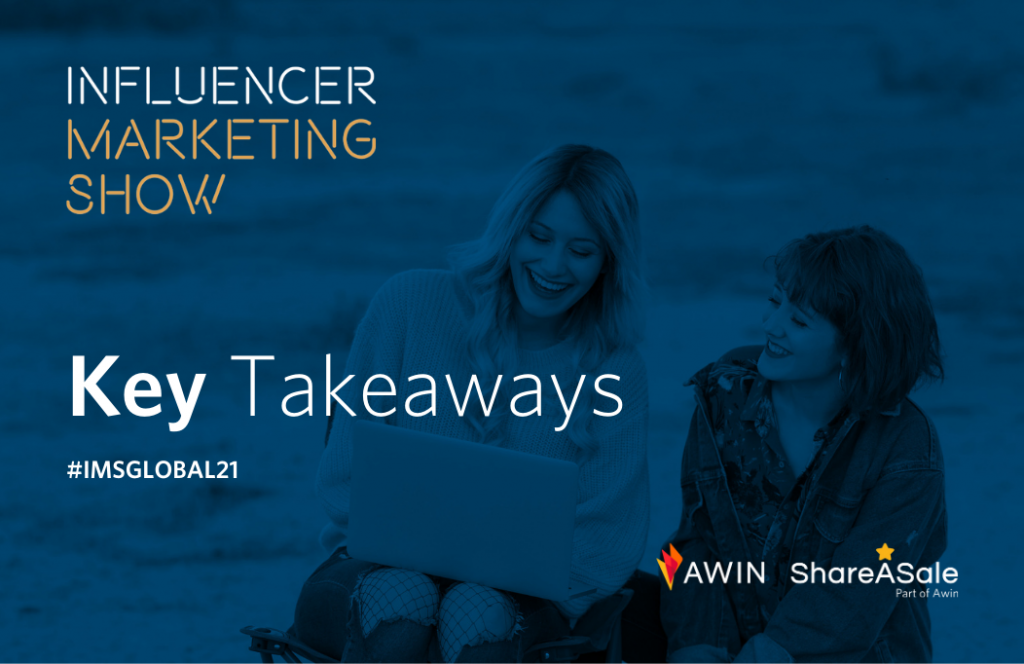#IMSGLOBAL21 featured speakers and panelists from all sectors providing their forecasts and views on the influencer industry. Here are our top highlights.

The Influencer Marketing Show was back with a bang last week, a jam-packed agenda filled with insights, trends and discussions from global brands, creators and agencies. Influencer marketing certainly stepped up to the mark during the pandemic, keeping audiences entertained, informed and, most importantly, connected throughout lockdown and international restrictions. We have collated key takeaways from the show set to shape and inform the future of influencer marketing.
1. Freedom within a framework
The balance between advising influencers on brand guidelines versus micromanagement of campaign content remains a sticking point within influencer collaborations. The difficulty arises when brands want too much control or influencers request direction from a brand. The art of forming a creative brief that conveys brand recommendations and enables influencer creativity has been branded as allowing freedom within a framework. TikTok creator content outperforms ad content in three ways: ad recall, finish rates and audience engagement, as the creator is able to optimize the audience they have invested their time and efforts into cultivating. Brands and influencers need to talk to and respect one another; long-term relationships and ambassadorship programs return brand success and revenue, as both parties have a nuanced understanding of one another – driving and empowering better content, consumer experience and brand trust.
2. A gap in the market: Anticipating the rise of audio
The growth of audio, from music to podcasting, looks set to be another avenue for brands and influencers to tap into and engage with audiences. While podcast consumption was expected to decline due to the hiatus in daily commuting during lockdowns, conversely, the demand for audio has soared, enabling the market to diversify via apps such as Clubhouse and Stereo. The largest audience for audio is currently millennials, followed by Gen-Z. TikTok recognized this opportunity and unveiled a free commercial music library for users, offering the first default sound on social media platforms. Facebook is also set to rollout new audio features: live audio rooms, soundbites and podcasts. The rise of audio coincides with the human need for community and interaction under national restrictions, providing a social connection during a time of unease and uncertainty. Just as TikTok provides entertainment and escapism with short-form video content, audio provides a long-form alternative that requires less investment from a consumer, without the need to watch, focus or stare at a screen.
3. Tap into an existing market with TikTok
With over 1 billion global users active on TikTik, it is clear to see why brands are looking to invest in the platform. However, with a content led algorithm (as opposed to social metric led) and the scarcity of commercialization options, it can be difficult for brands to gain momentum on the app. The premise is that TikTok is a community positive and inclusive space, augmented by its slogan, “Don’t make ads, make TikToks.” Brands are encouraged to leverage existing TikTok content by intercepting social culture and searching how consumers are already engaging with their brand. These insights are publicly available by searching hashtags. The popularity of Pinterest, which has seen a 60% increase in searches YoY, also resonates with leveraging existing content, as brands can see how consumers are using their products in real-time to truly understand and connect with their customer base.
4. It is now considered authentic to promote ads
Audiences are attuned to and happy for their preferred social content creators to promote ads, as long as it is in keeping with their personal interests and values. Creators are dedicated to curating a grid that inspires followers and generates consistent engagement. The onus is on the influencer to select brands that align with their true values and interests to sustain authenticity and audience trust. Social media users are looking to follow persons of influence, and often seek out those who can provide circumstantial support e.g. DIY and house renovation, upcoming weddings and pre- and post-natal advice. As reported by the Global Web Index, it is now understood that just under 3 in 10 adults globally use social media for brand discovery and research. Social media resulted ahead of traditional search engines for brand discovery, and on a par for brand research at 47% among Gen Z audiences.
5. ‘Always-on’ improves ad recall
Influencer marketing is not a one-size fits all approach. Test and learn activity is key to developing a strategy that generates positive return on investment. 20-30% of influencer budgets should be deployed for test activity. By identifying successful collaborations, long-term partnerships or reactivations will drive ad recall substantially. Just as a brand wants to ensure consumer loyalty, this need remains the same with influencer authenticity. If a creator talks about a product on several occasions, there is a subconscious affinity with the brand that boosts ad recall and purchase intent. Short notice campaigns or one-off agreements reduce the pool of influencers available to create, leading to common delays such as exclusivity agreements, schedule conflicts and rush fees.
As always, the Influencer Marketing Show Global provided fantastic insights and foreshadowed exciting opportunities for the influencer space. With a wide range of panelists and experts in the industry, the event is a must-watch. You can find all webinar content here.
Contact our Publisher Management team to learn more about influencer partnerships for your affiliate program.
